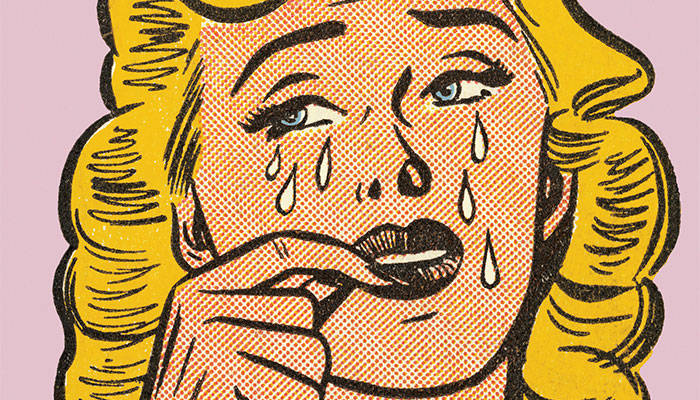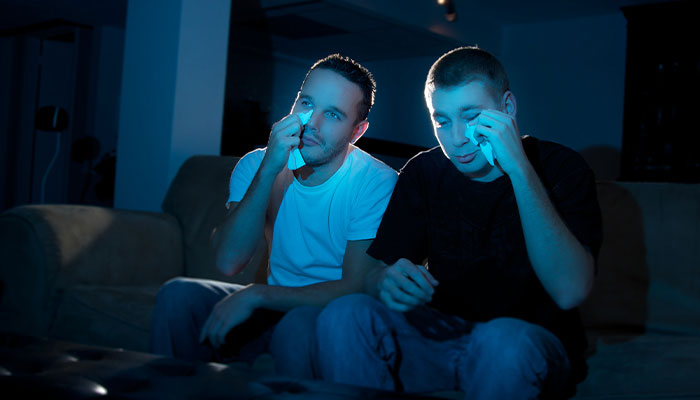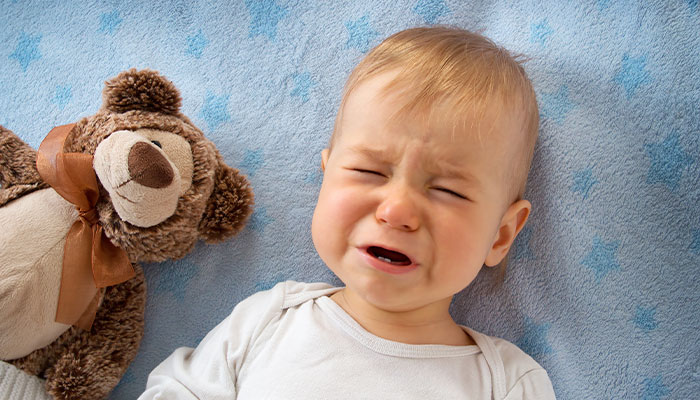Tears actually come from the lacrimal glands, which are just above the eye, and keep our eyes healthy and moist, assisting our immune system and removing irritants.

'Emotional tears' are initially triggered from an area of our brain that’s responsible for emotional arousal, known as the limbic system. This part of the brain communicates to another messaging area, called the Pons, which then signals the glands to produce tears.
Interestingly, tears caused by irritants may have a different chemical profile than tears caused by emotions.
Emotional tears seem to include higher levels of adrenocorticotropic hormones (a hormone linked to stress), prolactin (often linked to maternal behaviour), and an endogenous opioid (a type of 'pain killer') called leucine enkephalin, just to name a few.
In these various ways, it's possible that a primary function of tears is to facilitate a degree of stability within the body: homeostasis.
The culture of crying
Different cultures approach crying in different ways. For example, there’s the cliché of the British “stiff upper lip” which might stop some people from crying in public.
These cultural differences are likely due in part to differences in emotion regulation and expression. Certain expressive behaviours are more socially appropriate in some cultures and may be subtly reinforced or, where not socially appropriate, even punished from a very young age.
There is also some research suggesting that cultural differences in emotion regulation may be due to slight differences in personalities across cultures.
Sex and gender social roles and expectations have an important influence on crying. These expectations can be very challenging and even harmful to some.
The average personality profile in one culture may be quite different than another. Culture may influence the way we manage our emotions, including the expression of emotions such as sadness and crying
A 2008 study examined differences in emotion regulation across 23 countries. The authors found that cultures that prioritise social order (such as hierarchy) had higher traits of emotional suppression, a tendency to control or neutralise emotional expressive behaviour.
- Group excursions boost happiness in older people: new study
- As another lockdown bites, is complacency to blame?
However, cultures that minimised the maintenance of such social order and valued other individualistic ideals (such as "Western" cultures) scored relatively lower scores on emotional suppression
But looking at these differences in personality profiles is very complex; it depends on factors such as the living environments, relative isolation, genes, population density, political systems and migration patterns.
Crying – or not crying – as learned behaviour
Sex and gender social roles and expectations have an important influence on crying. These expectations can be very challenging and even harmful to some. So, culture and social norms have an important influence on these learned behaviours.

Role play: Both cultural and biological factors play important roles in gender difference when it comes to crying.
However, biology also plays a role and it's clear that there are some sex differences in emotional regulation and expression.
For example, one study found that sex differences in crying were even greater in countries that were wealthier, more democratic, and where male and female gender roles were less socially distinct.
Possible reasons for this are not yet fully clear, though it's evident that both cultural and biological factors play important roles.
Nature v nurture
I think the nature versus nurture 'debate' is fascinating, but it is a false dichotomy. Biology and learning interact in complex ways, and these are often very difficult to quantify.
This is similar for all types of human behaviour, including crying.
Some may cry more than others due to differences in personality (influenced by both genes and the environment), social and physical context, sex and gender, and/or genetic differences (and even the expression of these can be influenced by the environment).
The good news is tears can assist our immune system and remove irritants.
Nonetheless, we do know that personality and sex can play important roles.
In terms of sensitivity to emotion in others, dispositional empathy is a trait that may relate. This trait can vary from low to high sensitivity and is measured by the extent to which someone feels an appropriate emotion in response to another's emotion, and the ability to understand that emotion.
Women tend to report more dispositional empathy, and this might partly explain the tendency to cry more often, according to some researchers.
Is crying actually good for you?
The good news is tears can assist our immune system and remove irritants. Emotional tears appear to include higher levels of adrenocorticotropic hormones, prolactin and a pain killer called leucine enkephalin. It's possible that this helps our body maintain homeostasis, a degree of physical and emotional stability.

Evolution, baby: One of the very few ways babies have to communicate is through crying.
A recent letter from the British Journal of General Practice pointed out that Darwin once described tears as 'purposeless.' However, I believe most of us have an intuitive understanding that crying serves various purposes.
The letter describes different 'types' of tears: 'basal' tears to lubricate he cornea, 'reflex' tears to rinse away foreign particles, and 'psychic' tears related to emotion.
Social communication is likely another key function, whether it be to communicate pain, vulnerability, or something more complex such as honesty.
- Starbugs to boldly go further into astronomy's final frontiers
- Stress-busting tips for HSC students facing lockdown learning
Tears can also communicate the need for help, which would make sense from an evolutionary point of view as well. Crying is one of the very few ways babies or young children can communicate at all.
Do we cry more as we age? It's possible that hormonal changes, such as changes in testosterone associated with ageing, might lead to aging men being more emotional.
Age could also lead some men to simply care less about social norms around this type of emotional expression; I look forward to some things in ageing!
Dr Philippe Gilchrist is a Senior Lecturer in the Department of Psychology and a Research Fellow at Macquarie University's Centre for Emotional Health



